My Sweet Wyoming Home
Childhood memories of the least populated State in the Union
Today, for the Fourth of July, I thought Tradition & Sanity should offer its readers a great big helping of heart-warming, small-town America. This pleasant task I hand over to my very capable co-writer. ~ Dr. K
We often speak of “getting out into nature” as a way to experience the presence of God in creation, or as an antidote to the digital inundation of a secular worldview. This habit is especially important to cultivate in children: if all they are ever exposed to consists of interplanetary video games or Instagram reels, their souls will dry up for lack of wonder in the face of reality, which is awe-inspiring, beautiful, and, yes, demanding; and this will leave a person deficient in the humanity that is, in many ways, presupposed to being a good Christian.
It has sometimes been put this way: you need to be a “good pagan” before you can be a good Christian. This would be the generous reading of Wordsworth’s exclamation that he’d “rather be / A Pagan suckled in a creed outworn” than be alienated from the spiritual richness of the world through the hedonistic “getting and spending” that “lay waste our powers.”
The World Is Too Much With Us The world is too much with us; late and soon, Getting and spending, we lay waste our powers;— Little we see in Nature that is ours; We have given our hearts away, a sordid boon! This Sea that bares her bosom to the moon; The winds that will be howling at all hours, And are up-gathered now like sleeping flowers; For this, for everything, we are out of tune; It moves us not. Great God! I’d rather be A Pagan suckled in a creed outworn; So might I, standing on this pleasant lea, Have glimpses that would make me less forlorn; Have sight of Proteus rising from the sea; Or hear old Triton blow his wreathèd horn.
The Wordsworthian Romantic would rather keep the wonder of a backward pagan than lapse into the dull self-satisfaction of the business tycoon of the industrial revolution. But Wordsworth’s dichotomy isn’t the only option.
Although I was born in the foothills of the Austrian Alps, the Cowboy state of Wyoming is where my most formative years growing up were spent. Today, I’d like to go on a small tour of this big state, and share some of my love of it with you. In Wyoming, it is possible to see a slower way of life, one compatible with and often full of wonder — yet far from the melodramatic wish that would make Proteus and Triton rise again.
There’s a different poetic idiom in Wyoming—the country and Cowboy poetry. Folk musician Bill Staines, who passed a few years ago, has a beautiful song about Wyoming, in a soft country style.
Well there's shows in all the cities, The cities turn your heart to clay; It takes all a man can muster Just to try and get away. And the song's I'm used to hearin' Ain't the kind the jukebox plays, And now I'm headed home to my sweet Wyoming home.
In this article, I’ll share some homey and wondrous aspects of “My sweet Wyoming home”. Grounded in prairie dust instead of the ancient pagan classics, we’ll nevertheless come round and see a land where nature and wilderness can be one’s home without losing their wildness.
“The cities turn your heart to clay” sums up my feelings about why I love the least populated of the fifty states in the Union (although it’s the seventh largest in land mass—even Alaska has more residents). As one bumper sticker puts it: “WY: Social distancing since 1890.” The total population of Wyoming is under 600,000, and even the largest city, the capital Cheyenne, numbers under 70,000. My hometown of Lander is the thirteenth largest town in the State, with a whopping population of 7,500:
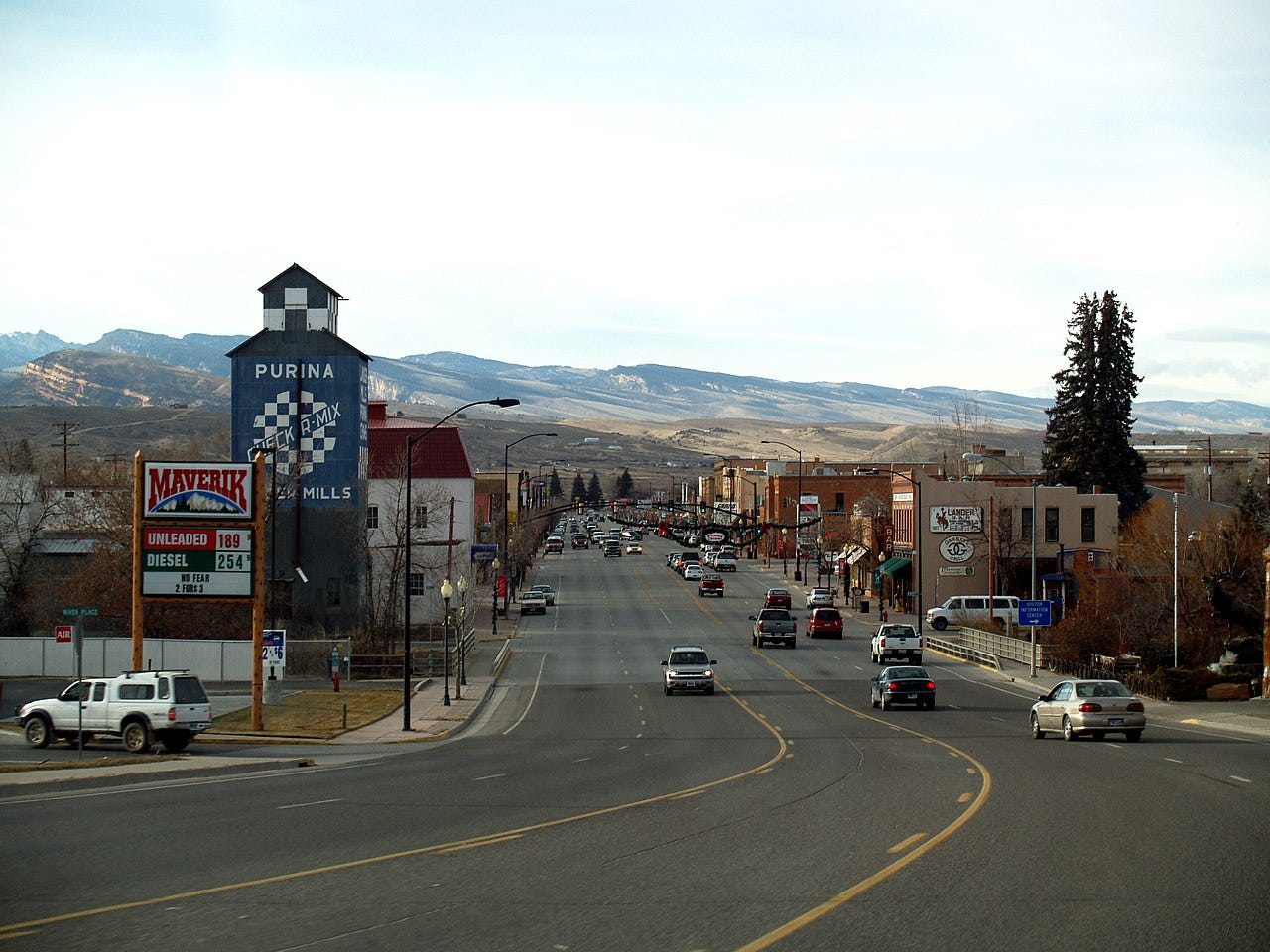
The Romance of Plains and Mountains
The Wyoming landscape is defined by the marriage of two radically different phenomena: the mountains and the prairie. Both are beautiful; both can be deadly; both capture the heart. These two starkly differentiated climates not only shape the land, they shape the people who brave their varied dangers.
On the prairie, wildlife must adapt to high heat and little water; the climate is arid, and short grasses and brush coat the sandy earth. The mammals who live there range from small burrowing creatures like rabbits, ground squirrels, and mice, to the sleek pronghorn antelope and the iconic buffalo. Coyotes, rattle snakes, and hawks are the primary prairie-dwelling predators, but other threats such as wolves, cougars, bobcats, and grizzly bears venture out where the plains butt against the mountains.
Fowl of various kinds also inhabit the plains. Harmless grouse and small songbirds forage among the sage and grasses, while red-tail hawks and other birds of prey wheel high overhead.
Folk song collector Gordon Bok once recorded a song called “Wild Birds,” where he speaks of the prairie between Cheyenne and Cody; the “town ’neath the mountain” could easily be Lander, where I grew up, and to which I have returned after some years away:
Lights flicker on in a town ’neath the mountain
Where night first comes down like a patch of black satin
And the road seems too long between Casper and Jackson
When you're tired of traveling alone.
Blackthorn and cottonwood drink up the Muddy;
Just buckwheat and sky between Cheyenne and Cody
Like a maplewing sown under red leaves blown down
It’s time to be going back home.
Antelope Antics

Perhaps the two most quintessential animals of the plains are the buffalo and antelope. Each deserves a few words.
The pronghorn antelope is the fastest land mammal in our entire hemisphere. It can sprint half a mile at 55 mph, and maintain 35 mph for over six miles. Scientists speculate that this speed, which vastly exceeds that of any extant predators, was probably once matched that of the now extinct American cheetah (fossils of which have been found in Wyoming), leading some to call pronghorns “survivors of the American savanna.” Optimized for this running, the pronghorn has extremely light bones and many different gaits. Unlike horses, which have perhaps six distinct gaits, and humans, which have five natural gaits (walk, jog, skip, run, and sprint), antelope have at least thirteen distinct gaits, with individual strides during their running or sprinting reaching over 23 feet!
William Clark (of Lewis and Clark fame) was the first European to report killing an antelope, writing “I killed a Buck Goat of this Countrey [sic], about the height of the Grown Deer, its body Shorter the horns which is not very hard and forks 2/3 up one prong Short the other round & Sharp arched.”
Bison Bison Bison
Th e other emblematic animal is the bison—and it is actually the emblem on the Wyoming State Flag.
The subspecies of buffalo that live in Wyoming are known as the “Plains bison,” while a slightly larger ecotype known as the “wood bison” lives in Canada. The Latin nomenclature is somewhat amusing. The genus is bison and the species is bison. For the “wood bison,” the subspecies name is athabascae (a Latinized name in Cree for a lake in Alberta). But for the plains bison, the subspecies name is also bison, resulting in a full scientific name of... bison bison bison. I suppose some scientist wanted to enshrine a subtle reference to the grammatically correct sentence “Buffalo buffalo Buffalo buffalo buffalo buffalo Buffalo buffalo.” (Read the extensive wikipedia page if you want to know how that works.)
Even our “smaller” Plains bison are huge. When I was about eight years old, I got to visit a nearby buffalo rancher and watch him “harvest” one of his herd. The term “mountain man” describes him better than “rancher.”
His preferred method of harvesting the buffalo was to take his muzzle-loaded musket (a “Bridger rifle”), load it with the powder horn, insert the spherical lead ball, and tamp it down with a little piece of cloth, to keep the ball from rolling out before you shot the gun. With his fire-arm thus prepared, he had me get into the cab of a big old forklift with him. He let me hold the musket while he slowly drove into the corral where herd had been attracted by extra hay. He singled out the buffalo he wanted, maneuvered the fork-lift to a good angle, took up the musket, and shot the buffalo in the neck. These animals can weigh over 2,500 pounds, with an average weight in the 1,600-1,700 pound range for males. If you don’t hit them just right, they are hardly affected by the bullet. Actually, a bad shot means a bleeding animal in a frenzy, with fellow bison smelling the blood and panicking. This you want to avoid.
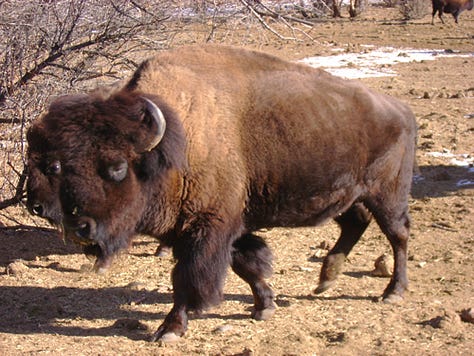

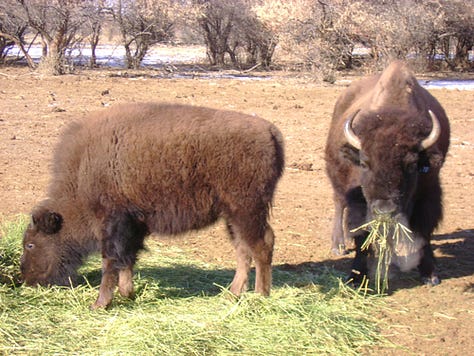
Well, he was a good shot, and the buffalo dropped like a bowling pin. As fast as he could, the rancher drove up the forklift, hopped out, and tied the dead buffalo’s feet to the prongs. Meanwhile, the other buffalo were getting unsettled. Even “tame” or farmed buffalo like these are unpredictable and wild, and, since they retain their herd instinct, can stampede perceived threats.
Taken out of the corral, the bison was then strung up and gutted. Like any other bovine, it has four stomachs… huge stomachs. Hanging off the forklift headfirst for processing, it probably stretched ten feet long. Alive and standing, bison measure a little over six feet from the top of their hump. As the guts were removed, the bullet was found flattened on one of the interior bones. I held on to this bullet until college; it formed an essential part of my boyish treasure hoard, which included shells, dried starfish, fossils, and a jaw from the smallest species of shark.
A buffalo will usually yield 500-600 pounds of pure red meat once it is butchered. One hunter I know in Lander told the story of shooting a bull bison on the edge of Teton National Park. He and his buddy spotted a group of them just over the park’s line, where it is illegal to shoot them. The hunters made their way downwind and waited for the bison to cross the park border, which the animals did in due course. Hiding in brush at the top of the hill, the hunters watched the bison slowly grazing towards them. The bison, when very near, suddenly stopped, sensing something in the undergrowth. “I had to put the laser-assist on my rifle to the lowest setting,” the hunter said, “because when they see the light they will either stamped you, or run away.” He aimed. As predicted, the moment the bull detected the light on the gun, he turned to run. As he turned, a fraction of a second presented itself for a clean shot — and the hunter took it. The nearly one-ton bull collapsed and rolled forty feet downhill, sending up a plume of brush and dust. It would take over twelve hours to field-dress the carcass and go just a few miles back to the truck. In fact, most of the meat was left in sealed bags near the carcass to be packed out the next day, and when they returned they had to scare off a black bear picking on the bones.
Bison have remarkably long gestational periods — 285 days, longer than that of humans, and considerably longer than that of other large ungulates, such as moose or caribou (both around 230 days).
Because of their massive size, bison have only one natural predator, wolves — and wolves usually prey only on cows or calves during the end of winter, when sickness and scarcity of food makes them easier to get. Typically, bison and wolves ignore each other; and even grizzly bears seldom attack adult bison (though they will steal carcasses from wolves) because an adult bison can kill a grizzly.
That bison are still alive today, and do not share the sad fate of the dodo bird or other similar recently extinct animals, is quite fortunate. North America contained an estimated sixty million bison in the late 18th century, but by the 1880s, only a few hundred survived. Several factors contributed to this dire situation: habitat encroachment by ranching settlers; conscious and concerted efforts to undermine Indian tribes by removing their primary food source; the commercial value of hides and other buffalo products.
By the beginning of the 20th century, efforts at conservation were beginning, and today there are about 400,000-500,000 bison, of which around 30,000 are wild, the rest being commercially ranched or managed as preservation herds. In many places out West, you can find bison meat at the grocery store next to the ground beef. A few miles outside of Lander are two small bison ranches, each with a few dozen head. Bison meat is excellent, rather lean, with no unpleasant “beefy” taste that regular cows can sometimes have. Unlike deer, elk, antelope, or other wild animals, it also lacks a “gamey” taste (I’m told moose is the most excellent wild animal meat, a claim I have yet to verify experientially).
Bobbysocks: Not Your Grandma’s Pussycat
Bison weren’t the only animal on that mountain man’s property. Next to the farmhouse was the pen of “Bobbysocks,” a tame bobcat (yes, you read that correctly). One of several bobcat cubs found by the Wyoming Game and Fish Department when their mother was hit by a car, Bobbysocks was given up for adoption. Our mountain man and his wife took him in.
He was as tame and friendly as the best of housecats. His fore-claws had been removed. He lived in a large, completely enclosed pen attached to the house: it had an outside portion with logs and branches (much like a zoo pen), and an inside section, a vestibule in the house, where people could easily enter and interact with him.
I don’t remember being scared of Bobbysocks. The thing that sticks out most in my memory was his purr. You barely had to pet him and he would butt his head against your hand and begin purring loudly. Bobbysocks’s purr is hard to describe: it was like a soft vacuum cleaner or a hair-dryer. Imagine a large dog’s growl, only positive and soothing instead of aggressive.
Wild bobcats can weigh up to 40 pounds, and I wouldn’t be surprised if Bobbysocks weighed something like that, or even a little more given his well-fed and sedentary lifestyle. In a delightful exhibition of feline camaraderie, a long-haired housecat became Bobbysocks’ life-long companion. Reading up on bobcats, this is quite interesting, given that they are relatively solitary animals in the wild. I suspect that, as the domestic cat had been with Bobbysocks from the time he was a cub, he had adapted to or adopted domestic feline behaviors.

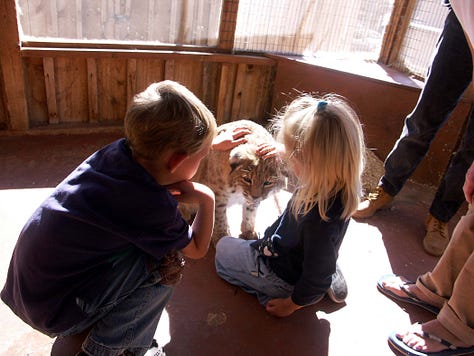

Another thing Bobbysocks did was lick you affectionately. But like his purr, his cat tongue was many times larger than your standard housecat’s. If you put your head down near his mouth, he would start vigorously licking your hair. It was quite something.
In the center picture above, you can see Bobbysocks holding a tinfoil ball in his mouth: this we threw for him to play with.
The Gentle Night

Not long ago a friend took me flying in his four-seat Grumman A5 Tiger, a light low-wing touring aircraft. We were flying in the evening but it was still light. This cool summer evening was still quite warm, but at least somewhat better for flying, since cooler air is denser, which in turn makes it possible to fly at lower speeds and carry more weight: and since our starting altitude in Lander is already over a mile high, anything helps! The ceiling of the A5 Tiger is 13,800 feet, and we were cruising at about 7,000.
We circled over nearby sandhills, and then, out of the light summer haze, I could see Crowheart Butte rising in the gloaming. It was actually thirty miles away, but from so much higher, it didn’t look that far. And at a groundspeed of about 115 mph, it took us only ten minutes to reach it.
The name “Crowheart Butte” has an interesting and relatively recent provenance. In March of 1866, Chief Washakie of the Shoshone Indians fought the chief of the Crow Indians near the butte. The dispute was over hunting rights in the territory, which the Shoshone had occupied for hundreds of years but which the Crow had begun to encroach due to scarcity in their own territory. Accounts of what happened vary, but, seeing that they were loosing braves on each side, Chief Washakie suggested a duel between the chiefs decide the feud. Sometime after the two disappeared for their duel, Chief Washakie returned with the Crow chieftain’s heart on his spear. Some stories say he ate the heart: one book of local lore recounts that when Chief Washakie was asked in his old age if this was true, his response was, “One does foolish things in youth that the wisdom of old age advises against.”
The dusk progressed, and we returned to Lander. Incidentally, it turns out we hit a Western Meadowlark (Wyoming’s state bird) while taking off. We pulled it out of the engine compartment after landing. It was quite cooked by the engine heat, and smelled like chicken. I didn’t try to verify if it tasted like chicken too.
The landing lights flickered on in response to our radio signal. The velvet dusk had given way to night by the time the airport gate closed behind us. The night in Wyoming is very special, whether you are in the mountains or prairie. Either way, the sky is very dark and the stars are very bright. You haven’t seen stars until you see them in a place like this.

There is something unmistakably and preciously primaeval about experiencing the raw night, and the transition into and out of it. Last year, I wrote of this encounter with reality that dawn stirs:
There are no woke slogans to answer the problems of our existence when the world is wrapped in darkness and you in your sleeping bag. The immense sky presses upon you, releasing praise from your soul, impossibly great. Answers are simplest, as old as the hills, and the mystery of the world cannot be forgotten when you are cold with dew and pink dawn creeps across the hills.
A Song for Wyoming
I’m not the hugest fan of John Denver, but I do love his “Song of Wyoming.” Or, to be more exact, my sister’s rendition of it. It captures something very true about the magic of the prairie.
Song of Wyoming (John Denver, played and sung by Rose Kwasniewski)
Well, I’m weary and tired, I’ve done my day’s riding,
Nighttime is rolling my way,
The sky’s all on fire and the light’s slowly fading,
Peaceful and still ends the day.Out on the trail night birds are calling,
Singing their wild melody,
Down in the canyon cottonwood whispers
A song of Wyoming for me.Well, I've wandered around the town and the city,
Tried to figure the how and the why,
Well, I’ve stopped all my scheming,
I'm just drifting and dreaming.Watching the river roll by,
Here comes that big old prairie moon rising,
Shining down bright as can be,
Up on the hill there’s a coyote singing
A song of Wyoming for me.[Rose inserts a coyote bit from another song here]
Now it’s whiskey and tobacco and bitter black coffee,
A lonesome old dogie am I,
But waking up on the range,
Lord, I feel like an angel,Free like I almost could fly,
Drift like a cloud out over the badlands,
Sing like a bird in the tree,
The wind in the sage sounds like heaven singing
A song of Wyoming for me.
One fall, my dad and I drove up a foothill of the Wind River range outside Lander. There, on a gentle slope lightly covered in sage and grasses, stood an old covered wagon belonging to a local horse owner. Her parents and siblings had still grazed sheep on these hills in the 1970s, using the covered wagon not for transport but just a convenient and (relatively) comfortable place to stay the night. The sheep wagon hasn’t been moved for at least thirty years. Its wheels are sunk a few inches into the ground. But that summer, we’d ridden horses up to it to refurbish it; put a new canvas cover on top; coated all the exposed wood with linseed oil to weatherproof it.
We put our sleeping bags in the interior and cooked on a camp stove outside. The night fell. As we stared at the starry sky we saw the International Space Station pass overhead. The cool scent of sage blew down the hillside. It was “the wind in the sage” sounding “like heaven singing.” And then came “that big old prairie moon rising / Shining down bright as can be.” I don’t know if we heard coyotes singing that night, but I have that at other times!
Looking back on growing up in Wyoming, I see that I was very blessed. Perhaps not surprisingly, I appreciate much more now what I had then.
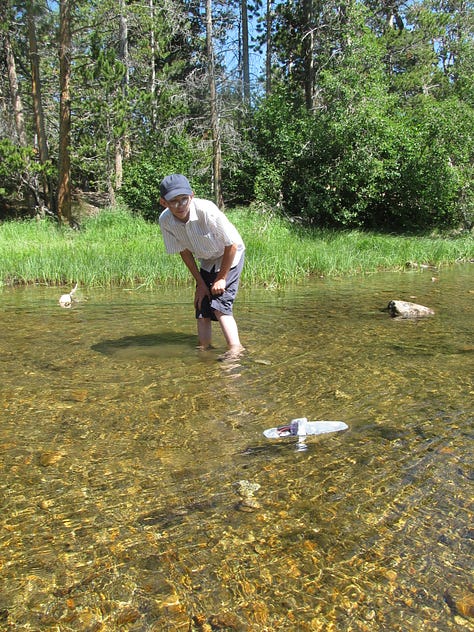
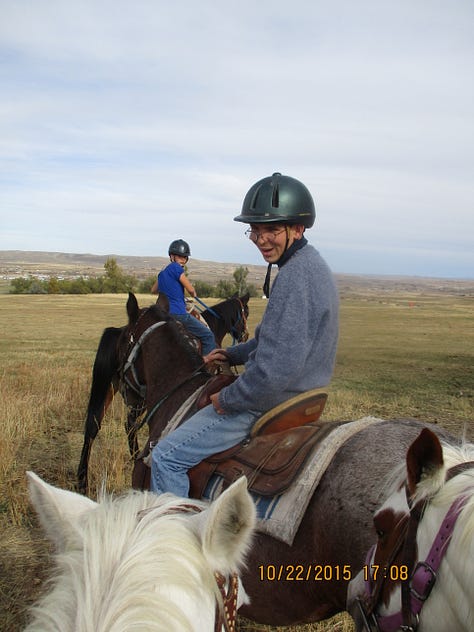
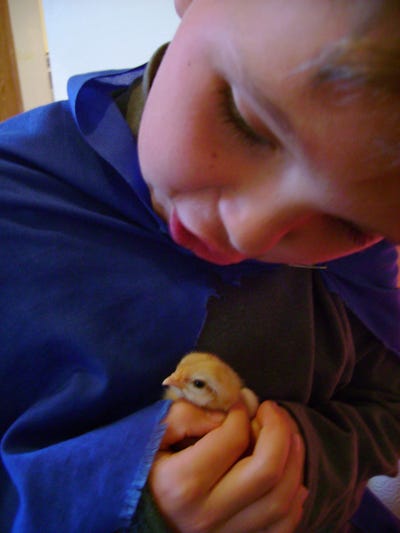
Not every day was romping with bobcats or shooting buffalo with black-powder rifles. A lot of life was ordinary; a lot of homeschooling is a slog. And there was frustration because of Wyoming’s remoteness and my growing desire to experience great art and music first-hand. The Lord provided ways, in due time, for me to experience those things — but how that happened will have to wait for another storytime.
One great adventure, the secret in the heart of Wyoming, remains unexplored. And so, in my next piece on Wyoming, I invite you to into the mountains with me…
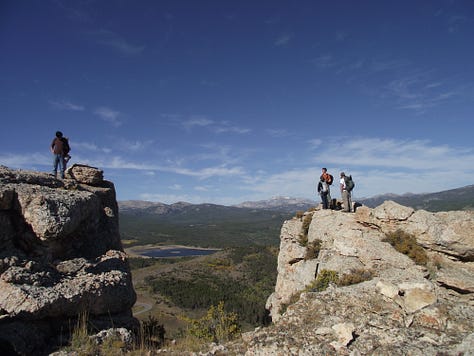

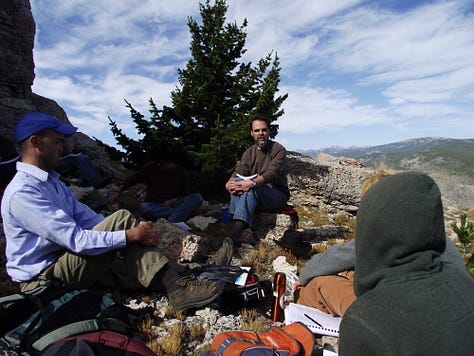
If you enjoy my work here on my dad’s Tradition and Sanity Substack, please consider giving me a small tip via my buymeacoffee.com page, where you can make a one-time or recurring donation to support my writing. Thank you!



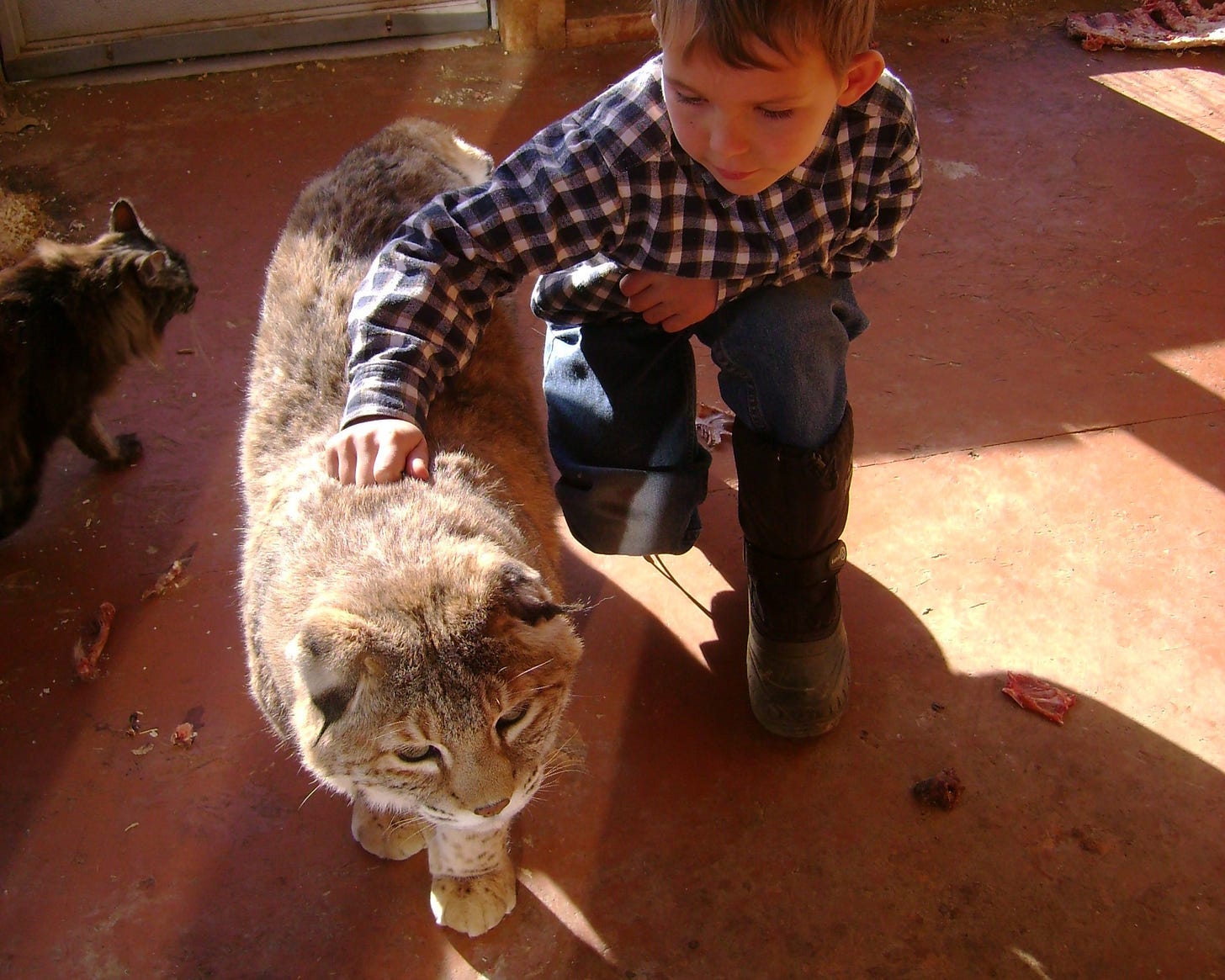
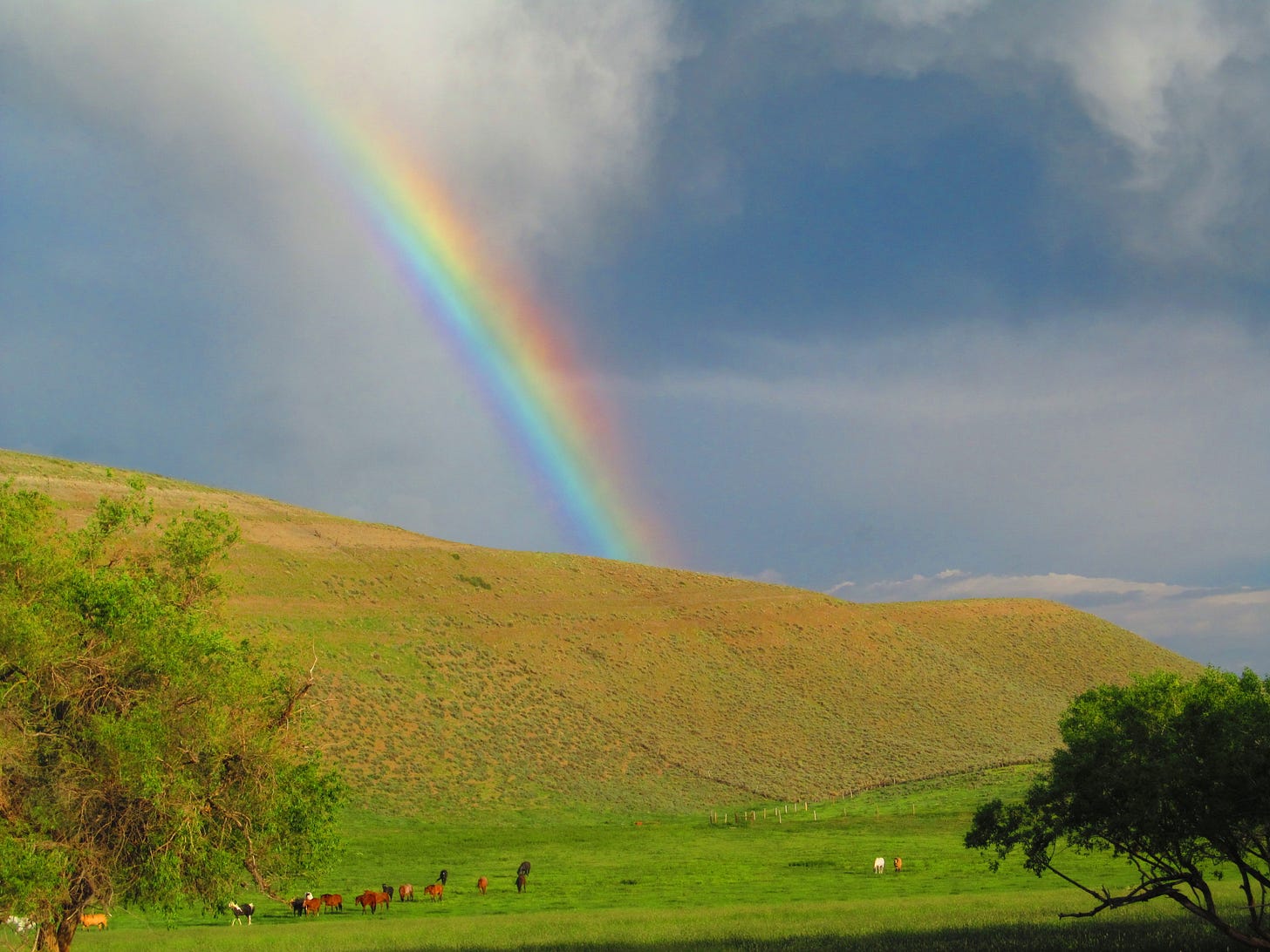
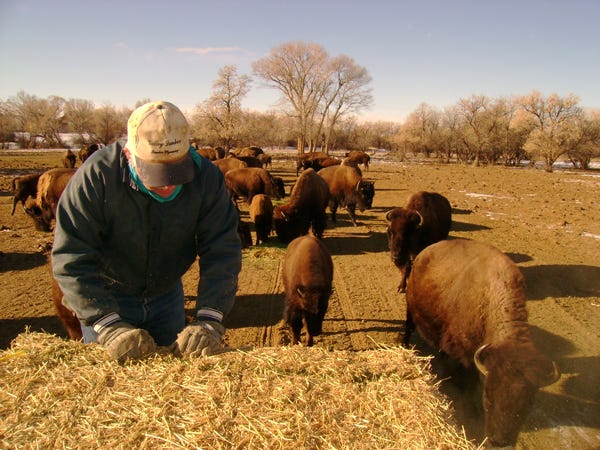

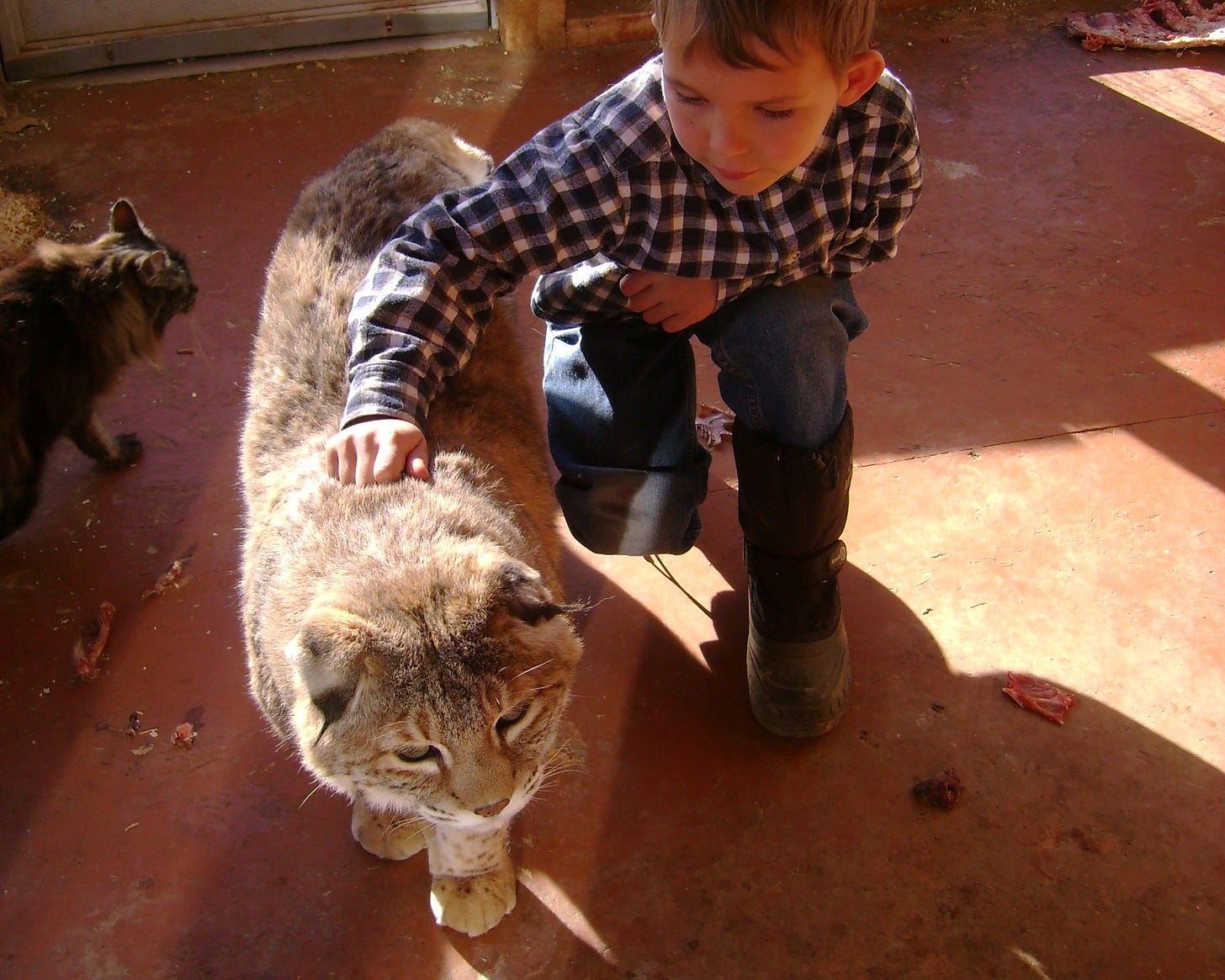
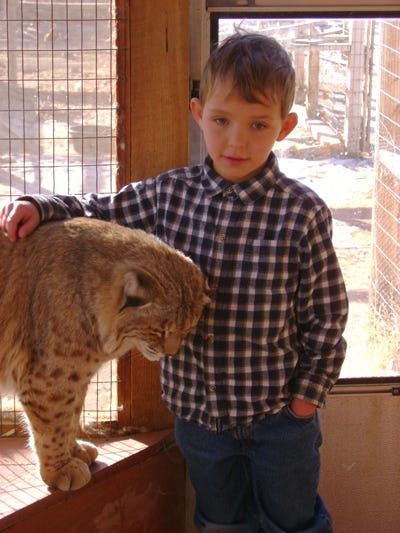

One day I hope we will visit Wyoming!
I especially enjoyed Rose singing, including the coyote yipping! I feel like an angel....